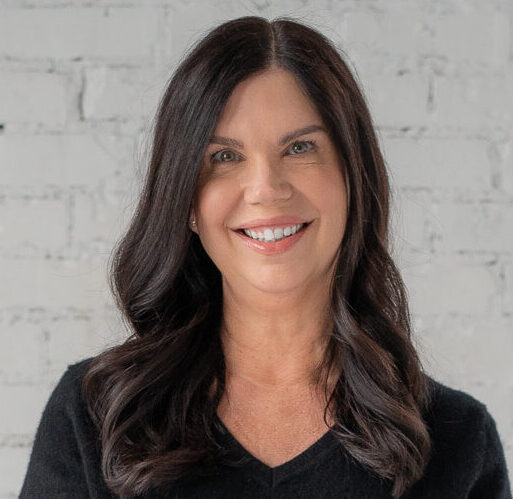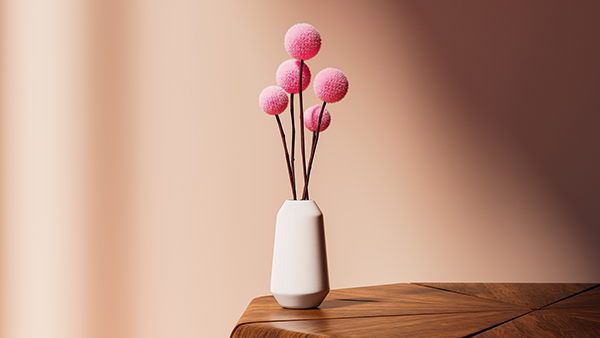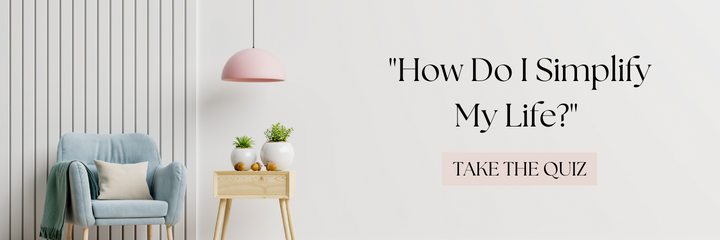From tips on how to become a minimalist to questions to ask to decide if you want to become a minimalist, this little guide will help you live with less, slow down and begin to create a life you crave. Think about having less stuff and more space, less hurry and more time and trading less stress for more ease.
This little guide on how to become a minimalist will include ideas about minimalist living, creating a minimalist mindset and getting rid of excess possessions, obligations and negative thoughts. Most of us start out with too much of all of those things.
Since 2006, I made some big changes with my family. We sold and donated close to 90% of our stuff, paid off all of our debt and downsized from a big house to an apartment less than half the size. Eventually, we moved into smaller house and we were much more intentional about how we chose it. I made some changes personally too. I began to prioritize my health and my heart. That included creating a morning routine, moving more throughout the day, working less and sleeping more. Learning how to be a minimalist also meant that I was questioning my purchases and shopping habits. I also left a long career in sales and marketing and created my own business. I’m still learning, changing, and growing but following are a few of the lessons I picked up as a beginner minimalist and may help if you are just getting started.
How to become a minimalist: a little guide to living with less.
My goal wasn’t to become a minimalist, but instead to eliminate as much stress as possible from my life after a scary diagnosis of multiple sclerosis. I didn’t even know I was simplifying my life at first but I began to notice that simplicity was at the heart of every change I made. Even though I didn’t have a clear plan, many of the things I did are the first steps I now recommend to beginner minimalists or to anyone who wants to reduce stress and enjoy a happier, healthier life. A more minimalist lifestyle can be helpful even if you really don’t want to become a minimalist. As you probably know, what you do with something is much more important than what you call it.
1. Start to become a minimalist by asking questions.
The following questions will help you on your minimalist journey and allow you to live a more intentional life. Why do I want to simplify my life? Figure out why you want to simplify. My why was health. Your why may be different. Maybe you want to pursue your dream job, travel the world, or have a few minutes to yourself every day. Jot down a few of the things you want out of life and why you think minimalism will help you get there. Once you understand and connect with the whys, the hows, whats and wheres will come much more easily. Here are a few more questions:
- What fears do I have about becoming a minimalist or simplifying my life?
- What pace will best suit my personal time and energy availability?
- Who can I turn to for support?
- How will I measure and celebrate my progress?
2. Create a support system to encourage your curiosity about a minimalist life.
Not everyone in your family or social circles will support the changes you want to make. Create an environment that will support you by reading books and blogs and enjoying other resources that encourage minimalism. Here are a few resources to consider:
- The Simplicity Space: simplicity support system
- Minimalism: A Documentary about the Important Things
- Soulful Simplicity: book
- Be More with Less: Facebook Page
- Becoming Minimalist: blog
- You Can Buy Happiness (and It’s Cheap): book
- The Joy of Less: book
- @bemorewithless: Instagram
3. Instead of trying to convince your friends and family to be minimalist, encourage them.
You can’t expect or force others to become a minimalist with you, but you can encourage them. Start by focusing on your own stuff and demonstrating the benefits of living with less. If you want people to see the joy in less, live joyfully with less. If your friends or family are curious, invite them to participate in a minimalist scavenger hunt or try this. Let your kids help with their toys and clothes. Ask your family what they think about owning fewer possessions and creating a minimalist home. Share the benefits and what you see on the other side of decluttering and slowing down.
4. Take tiny steps in becoming a minimalist.
If you want to know how to become a minimalist without getting frustrated or burning out, it’s with tiny steps, often the tiniest steps. Instead of downsizing overnight to move into a tiny home, start by keeping a box by the door for odds and ends that don’t matter to you. Start by cleaning out your pantry or a corner of your closet. If you want to cut back on social media so you have more time, start by protecting a few minutes every morning before you check your phone. Instead of getting rid of everything, try living without something for 30 days and see how it goes. Try these 7 tiny steps.
5. Don’t fill up all the spaces.
When you are decluttering to become a minimalist or simply to create a little space in your home, there may come a time when empty shelves and sparse calendars make you uncomfortable. To ease the pain, you might want to buy more things, and commit to doing more. Instead, let the spaces you create give you room to think about how you really want to spend your time. This is how you intentionally start a minimalist life.
6. Try a minimalist challenge or experiment.
Be curious and have fun challenging yourself to live with less. Becoming a minimalist doesn’t have to be a project in suffering. You can have fun and learn along the way.
- Minimalist fashion challenge Project 333: dress with 33 items or less for 3 months.
- The Mins Game: Give away 1 thing on day 1, 2 on day 2, 3 on day 3 and so on.
- Try a Decluttering Burst and let go of 100 things in less than an hour.
7. Don’t work so hard at becoming a minimalist.
Make decluttering easier. The idea of not pushing and working so hard at making a change is one of my unpopular opinions. I just think we can get where we want to go in a gentler way. Before simplifying further, think about what you really want out of this life of yours. Is this the time to declutter more or is this the time to deepen a connection with someone you love? Is this the time to move on to your bookshelves, or is this the time to create something new, or serve in your community? If you aren’t sure, check out these 5 signs. Perhaps it is simply time to rest.
8. Create a minimalist mindset.
We often think that how we become more minimalist is directly correlated to how many things we own and what things look like around us. That’s part of it but the biggest shifts won’t happen around you, they’ll happen within you. You’ll begin to discover that you need less than you think to live a happier life. Because you won’t be juggling as much, you’ll feel more connected to yourself, overreact less and you’ll be able to direct more attention and energy to the things that matter to you. That’s so much more powerful than an organized kitchen.
9. Don’t forget to have a life.
We don’t remove clutter, reduce stress, and reject busyness to have a simple life. We do it to have a life. Don’t wait until your debt is paid off, or every room in your home is decluttered to start living. Minimalism invites you to be intentional about how you invest your time and energy, and how you want to fill your heart. Start now.
10. Trust yourself to do what is best for you.
Don’t worry about following the advice of every popular minimalist or decluttering expert. You don’t have to live in a tiny house or carry all your belongings in a backpack. Don’t worry about how many items you own or don’t own. Don’t compare your journey to another. You can watch your favorite movies and buy what you need and love. You can call yourself a minimalist or not. This is your journey, your minimalism, your life.


